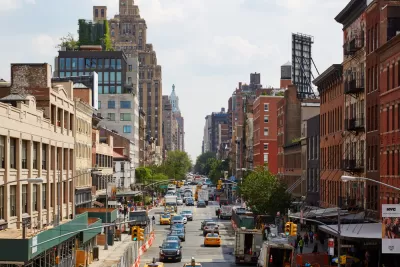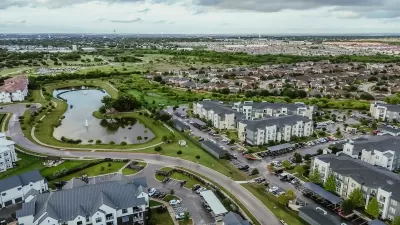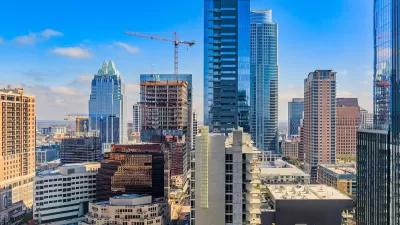When wealthy investors treat homes like poker chips, it is the tenants who end up losing. How do we interrupt the vicious cycle of speculation and displacement?

New York City’s housing market is a multibillion-dollar industry and one that has expanded rapidly over the past three decades. By one estimate, the values of multifamily properties increased between 400 percent and 600 percent between 2000 and 2018 in every borough except Staten Island. This climate has fed a boom of real estate speculation across the city, driving up rents, pushing out longtime residents, and creating “super-gentrified” islands of wealth in neighborhoods where lower-income New Yorkers had lived until the recent past.
“Speculation” in a housing context is a slippery term to define, but some of its harbingers are well known: Anonymous LLCs scooping up homes in lower-income neighborhoods, then reselling them quickly at wildly inflated prices; property owners “warehousing” vacant apartments in the midst of a housing shortage, betting on a turn in the market or a spike in land values to create more profit than a rental income stream could.
But the way multifamily buildings are financed is also a strong signal of speculative action, and one that can tell us not only how likely a building’s tenants are to be displaced, but how likely they are to be living in poor housing conditions, according to “Gambling with Homes, or Investing in Communities,” a report from the Local Initiatives Support Corporation (LISC) and the University Neighborhood Housing Program (UNHP).
The report found that tenants in buildings that had recorded “speculative events”—like a steep increase in prices between sales, or a large amount of debt borrowed against the building—had significantly worse outcomes than tenants in buildings without these markers of speculation. Landlords who bought properties at higher values, or who took on more debt against their buildings, were 1.5 times more likely to execute an eviction warrant against their tenants than owners of comparable buildings in similar neighborhoods.
Speculative financing was also associated with buildings being in a poorer state of repair. Buildings with higher debt loads and buildings purchased at higher sales prices had 2.7 times the number of housing code violations from the city Department of Housing Preservation and Development (HPD).
According to Julia Duranti-Martínez, program manager at LISC and one of the report’s co-authors, “This really undercuts the claim that landlords are generally reinvesting in their properties, and reinforces what tenant leaders and organizers have been saying for quite some time, which is that this is primarily a strategy for extracting profits from buildings, not for investing in their upkeep.”
The report homes in on two forms of speculation, both of which rely on the rising value of the building as an asset, rather than its income from rent payments, for profit. The first occurs when a landlord purchases a multifamily building with the intent to resell it at a higher price, a strategy that works particularly well in neighborhoods undergoing gentrification, or where public sector decisions, like zoning changes or infrastructure investments, are likely to lead to higher property values in the near future.
The second speculative strategy is a little more complex, and possibly more insidious: using the building as leverage to access relatively cheap capital in the form of a refinanced mortgage loan, which can then be diverted to other investments. For example, if a building’s assessed value rises significantly over five years, the owner can refinance the building and use the larger loan amount to purchase a second property, and then a third, and so on.
In the meantime, tenants in the original property are more likely to be dealing with low-quality repairs, deferred maintenance, and a higher number of HPD violations than tenants in buildings that aren’t as loaded with debt. Rather than investing in upkeep, the report suggests, owners who take on higher debt levels ...
FULL STORY: Breaking NYC’s Housing Speculation Cycle

Trump Administration Could Effectively End Housing Voucher Program
Federal officials are eyeing major cuts to the Section 8 program that helps millions of low-income households pay rent.

Planetizen Federal Action Tracker
A weekly monitor of how Trump’s orders and actions are impacting planners and planning in America.

Ken Jennings Launches Transit Web Series
The Jeopardy champ wants you to ride public transit.

Washington Legislature Passes Rent Increase Cap
A bill that caps rent increases at 7 percent plus inflation is headed to the governor’s desk.

From Planning to Action: How LA County Is Rethinking Climate Resilience
Chief Sustainability Officer Rita Kampalath outlines the County’s shift from planning to implementation in its climate resilience efforts, emphasizing cross-departmental coordination, updated recovery strategies, and the need for flexible funding.

New Mexico Aging Department Commits to Helping Seniors Age ‘In Place’ and ‘Autonomously’ in New Draft Plan
As New Mexico’s population of seniors continues to grow, the state’s aging department is proposing expanded initiatives to help seniors maintain their autonomy while also supporting family caregivers.
Urban Design for Planners 1: Software Tools
This six-course series explores essential urban design concepts using open source software and equips planners with the tools they need to participate fully in the urban design process.
Planning for Universal Design
Learn the tools for implementing Universal Design in planning regulations.
Heyer Gruel & Associates PA
Ada County Highway District
Institute for Housing and Urban Development Studies (IHS)
City of Grandview
Harvard GSD Executive Education
Toledo-Lucas County Plan Commissions
Salt Lake City
NYU Wagner Graduate School of Public Service





























